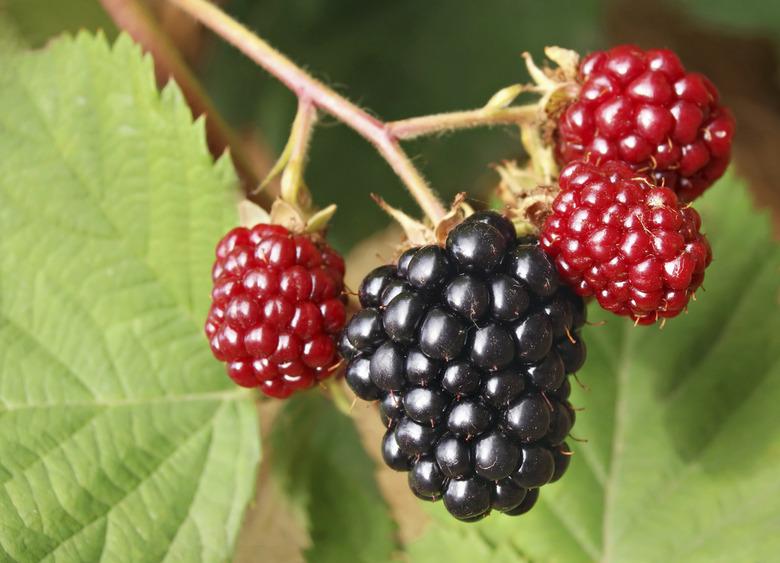Varieties Of Thornless Blackberry Plants
Thornless blackberry varieties produce some of the best-tasting fruit. Unlike those with thorns, which often grow wild in thick tangles yielding more spines and spikes than sumptuous fruit, thornless blackberries have been domesticated and are easily grown in the garden or in containers. Their fruit is not only less harmful to harvest than that of their thorned cousins but sweet and juicy too. In addition, blackberries (Rubus spp.) are high in antioxidants and may help to prevent diseases like cancer, cardiovascular disease, and high cholesterol.
Growing and Harvesting Blackberries
A gardener's dream, blackberries are winter hardy like other berry plants, including blueberries and raspberries. The roots of blackberries are perennial, but the stems (called canes) and leaves grow new each year and are biennial — meaning they grow for a year then produce fruit the following year, after which they die. So don't count on a blackberry harvest until the second year of growth, but after that new canes will replenish the spent ones annually so you'll have fresh berries to look forward to each summer after that.
Blackberry varieties range from erect to trailing, with the latter requiring the support of a trellis. Many common thornless blackberry varieties, often developed in university breeding programs, fall between the two and benefit from trellising. Pruning is important and involves clearing spent canes that are finished producing fruit so that new, fruit-bearing canes can take their place.
Mature blackberries are ready to pick when they are firm, plump, and black, and they need to be harvested often once they are ripe, usually from June to July. A favorite addition to summer pies, blackberries are delicious in smoothies and summer recipes like salads and are also used to make jam and wine. Blackberries perish rather quickly even if refrigerated, so enjoy them promptly once harvested.
Thornless Blackberry Varieties
There are many types of blackberries worth considering for your garden, but thornless varieties are often preferred because they produce an abundance of delicious berries without the worry of sharp thorns. Following are a few favorites.
- Rubus 'Navaho' (USDA plant hardiness zones 5 through 9): Navaho is known as the first thornless blackberry. Although late to ripen, Navaho produces firm, medium-size fruit with a delicious, mildly sweet flavor. Although Navaho grows erect and does not require support, the fruit produced can be of a higher quality when trellised.
- R. 'Apache' (USDA zones 5 through 9): The erect, sun-loving Apache plants produce high yields of glossy black fruit. Larger than the Navaho, the Apache berry is firm and tasty right off the bush, baked into a pie, or simmered into a syrup.
- R. 'Natchez' (USDA zones 4 through 10): The semierect Natchez plant requires the support of a trellis to ensure quality fruit. Ready for harvest earlier than other varieties, Natchez produces a large berry with a sweet flavor profile when left to fully ripen.
- R. 'Ouachita' (USDA zones 5 through 9): Producing large amounts of plump berries, the Ouachita plant has a longer harvesting season than other varieties. Although the berries are said to have large seeds, they also have a longer shelf life once picked than most blackberries.
References
- Tallahassee Democrat: Stay Out of the Bramble With Thornless Blackberries
- Almanac: Blackberries
- Kimmel Orchard & Vineyard: Blackberry Season Is Here!
- Piedmont Master Gardeners: Blackberries Part I
- University of Florida IFAS Extension: The Blackberry
- AgriStarts: Rubus 'Navaho'
- AgriStarts: Rubus 'Ouachita'
- AgriStarts: Rubus 'Natchez'
- AgriStarts: Rubus 'Apache'
